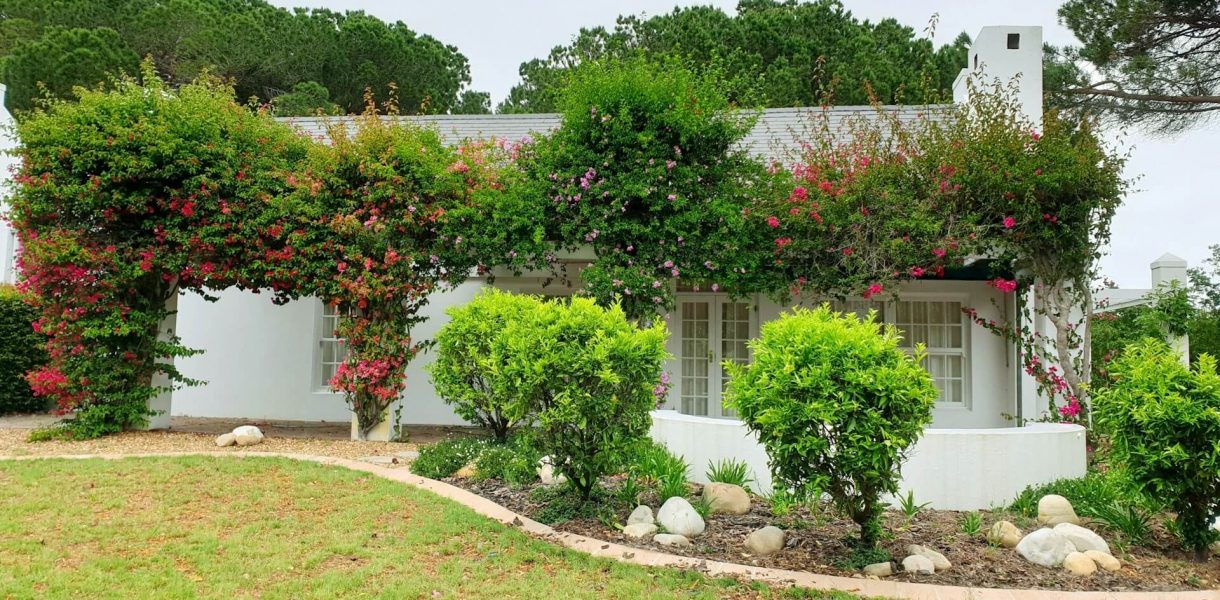In the contemporary rhythm of life, our outdoor spaces have evolved into extensions of our homes, offering sanctuaries of solace and rejuvenation. The art of crafting stunning and practical outdoor spaces delves deep into design intricacies, landscaping nuances, functional considerations, and the personal touch. This article will explore each of these facets comprehensively, unraveling the layers of creativity and thoughtful planning that transform ordinary exteriors into extraordinary havens.
Embracing Outdoor Spaces
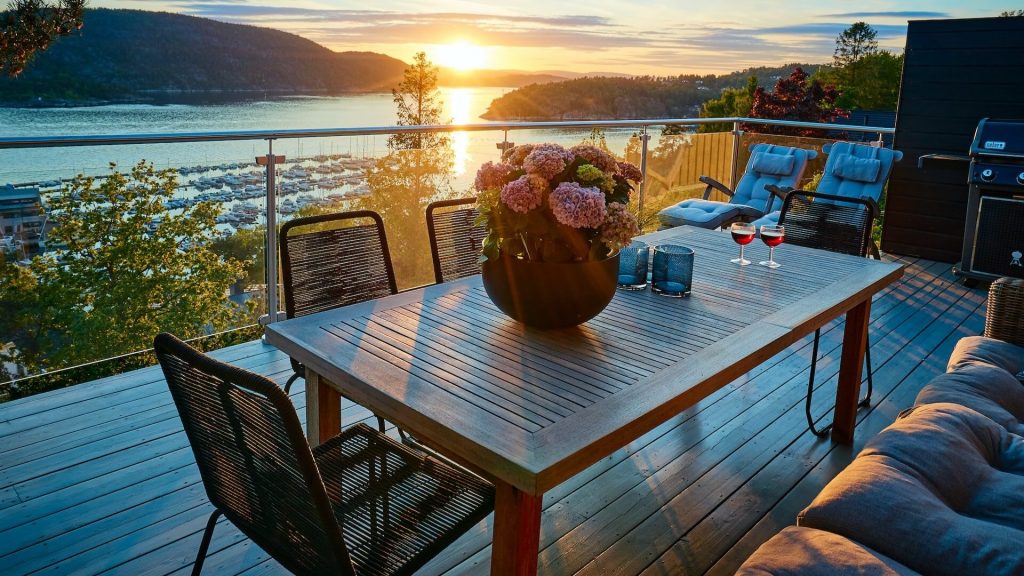
Creating an enchanting outdoor space starts with embracing the canvas of nature. The size or layout of the space matters less than understanding its unique environmental factors. Thoughtful consideration of sunlight exposure, wind patterns, and existing foliage forms the foundation for a design that seamlessly integrates with the natural surroundings. Whether a small balcony or an expansive backyard, this understanding sets the stage for a transformative outdoor experience.
A Symphony of Design Principles
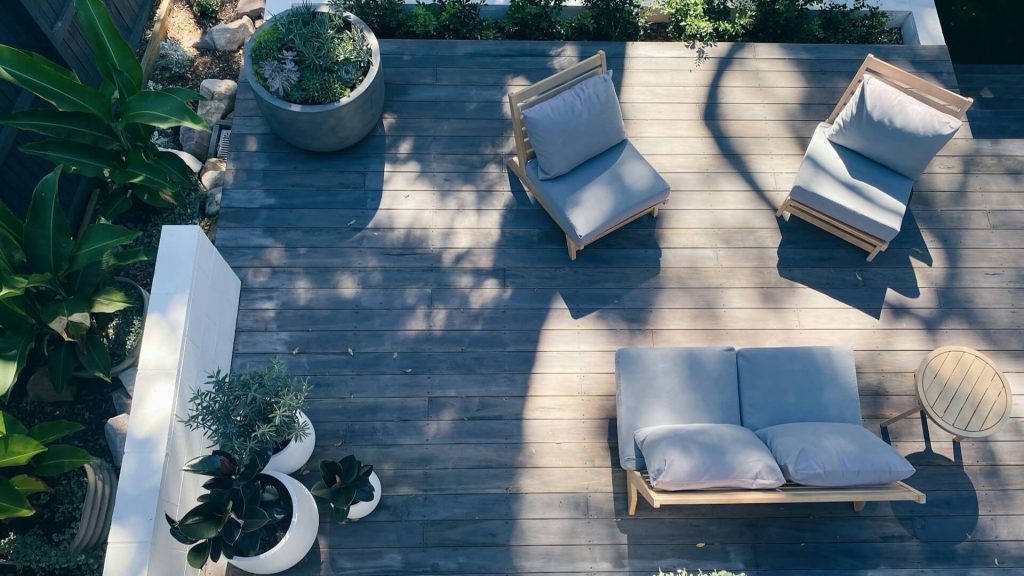
Beyond mere aesthetics, crafting stunning outdoor spaces is an orchestration of design principles. Achieving visual harmony involves balancing elements such as color, texture, and form. The careful juxtaposition of soft and hard landscaping elements creates contrast while maintaining unity throughout the design. An understanding of these principles guides the selection of furniture, materials, and overall layout, ensuring a space that captivates the eye and fulfills its intended purpose.
Landscaping Wonders
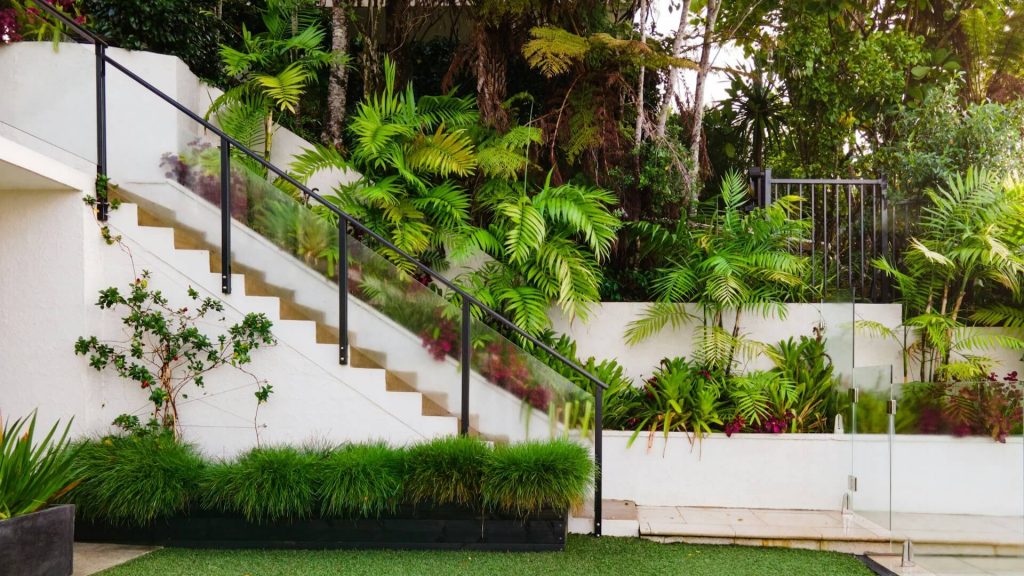
Landscaping is the soul of outdoor design, breathing life into the space. Beyond mere aesthetics, the selection of plants involves a nuanced understanding of climate, soil conditions, and local biodiversity. Introducing native species not only supports local ecosystems but also ensures plants thrive in their natural environment. Hardscaping elements, such as well-crafted pathways and patios, contribute structure and definition, seamlessly blending the built environment with the organic.
Water features elevate the sensory experience, turning the outdoor space into a living sanctuary. Fountains provide a soothing auditory backdrop, while reflective ponds create a tranquil atmosphere. Well-placed rocks and natural materials further integrate the landscape, offering tactile elements that engage visitors on a deeper level. The landscaping process is a meticulous dance between form, function, and the intrinsic beauty of the natural world.
Furniture and Accessories

The heart of practical outdoor spaces lies in the selection of furniture and accessories that seamlessly blend comfort with style. Weather-resistant materials, such as teak or aluminum, ensure longevity and durability. Comfortable seating arrangements, whether lounge chairs, sofas, or hammocks, are strategically placed to encourage relaxation and social interaction.
Outdoor lighting serves a dual purpose of practicality and aesthetics. Carefully positioned lights highlight key features, guide pathways, and extend the usability of the space into the evening. Solar-powered or energy-efficient lighting options not only reduce the environmental impact but also contribute to a sustainable outdoor experience.
Accessories, such as sculptures, decorative pots, and outdoor rugs, add a personalized touch. Thoughtful placement of these elements creates focal points and infuses the space with character. The interplay between furniture and accessories transforms the outdoor area into a curated, inviting environment.
From Dining to Entertainment
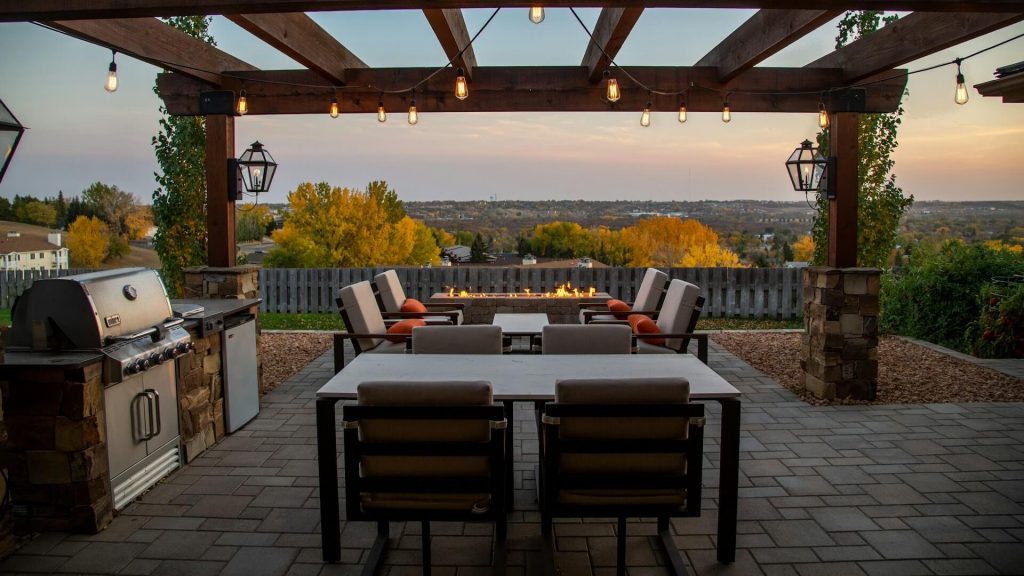
The functionality of outdoor spaces is realized through meticulous planning and design. Distinct zones for various activities, such as dining, cooking, and lounging, cater to the diverse needs of users. Outdoor kitchens equipped with grills, countertops, and storage seamlessly integrate with dining areas, creating a cohesive and functional space.
Versatility in design ensures that the outdoor space remains adaptable to different occasions and seasons. Foldable furniture, modular seating arrangements, and flexible lighting solutions provide the freedom to transform the space based on specific requirements. Integrated storage solutions, such as benches with hidden compartments or stylish outdoor cabinets, maintain an organized and clutter-free ambiance.
Maintenance and Durability
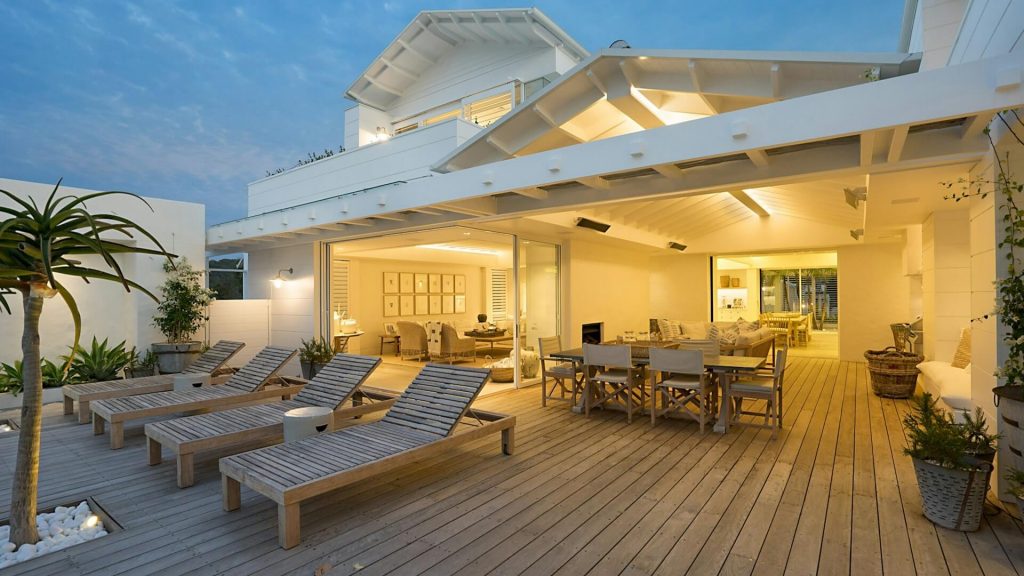
Crafting outdoor spaces that endure the elements requires a strategic approach to material selection and maintenance. Weather-resistant materials, including rust-resistant metals, UV-resistant plastics, and treated woods, are essential for furniture and structural elements. Outdoor fabrics with waterproof coatings add an extra layer of protection.
Low-maintenance landscaping choices, such as native plants and drought-tolerant species, reduce the need for constant attention. Incorporating automated irrigation systems ensures proper hydration for plants while minimizing water waste. Choosing materials that age gracefully, such as patinas on metal or weathered wood, contributes to the evolving charm of the outdoor space.
Regular maintenance routines, including cleaning, sealing, and seasonal inspections, safeguard the longevity of furniture and structural elements. By adopting a proactive approach to weathering, outdoor spaces can maintain their allure without succumbing to the challenges of nature.
Sustainability in Outdoor Design
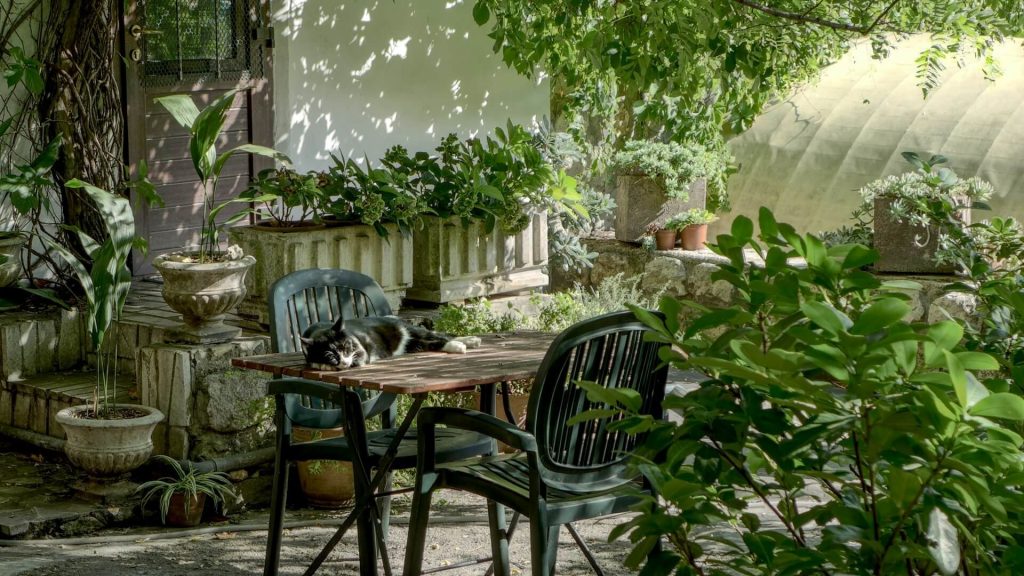
In an era of environmental awareness, crafting outdoor spaces aligns with sustainable practices. Opting for energy-efficient solutions, such as solar-powered lighting and appliances, reduces the ecological footprint of the space. Water conservation is addressed through the use of permeable surfaces, rainwater harvesting, and the selection of drought-tolerant plants.
Native plant selections support local ecosystems and reduce the need for excessive watering or chemical inputs. Composting systems, green roofs, and recycled materials contribute to a closed-loop approach, minimizing waste and promoting eco-friendly outdoor living. Sustainable practices not only benefit the environment but also foster a sense of responsibility and stewardship among homeowners.
Beauty on a Budget

Crafting stunning outdoor spaces doesn’t require a bottomless budget; rather, it demands creative and strategic thinking. Budget-friendly solutions can be just as impactful when approached with ingenuity. Long-term investments in key pieces, such as quality furniture and durable materials, ensure a lasting and timeless aesthetic.
DIY projects, such as creating custom planters or repurposing existing furniture, add a personal touch without breaking the bank. Choosing low-maintenance plants and materials can reduce long-term costs associated with upkeep. By prioritizing investments based on longevity and impact, homeowners can achieve a high-end look without compromising financial sensibility.
Your Signature in Every Corner

The true essence of crafting stunning outdoor spaces lies in personalization. Infusing the space with elements that reflect individual tastes, preferences, and experiences transforms it from a generic setting into a personalized haven. Custom-made furniture, unique plant selections, and curated decor items tell a story and create a connection between the space and its inhabitants.
The selection of color palettes, patterns, and textures is a highly personal choice that contributes to the overall atmosphere. Incorporating sentimental items, such as family heirlooms or travel souvenirs, adds layers of meaning and history to the outdoor space. Personalization is the final brushstroke that elevates the design from a mere creation to a genuine extension of the homeowner’s identity.
Conclusion
In conclusion, crafting stunning and practical outdoor spaces is an intricate journey that weaves together nature, design, functionality, and personal expression. From the foundational understanding of the natural environment to the careful selection of furniture, each step contributes to the creation of a timeless retreat. The result is an outdoor sanctuary that stands as a testament to the harmonious integration of nature’s beauty and human ingenuity – a space that not only elevates living to an art form but also becomes a lasting haven of joy, tranquility, and self-expression.
